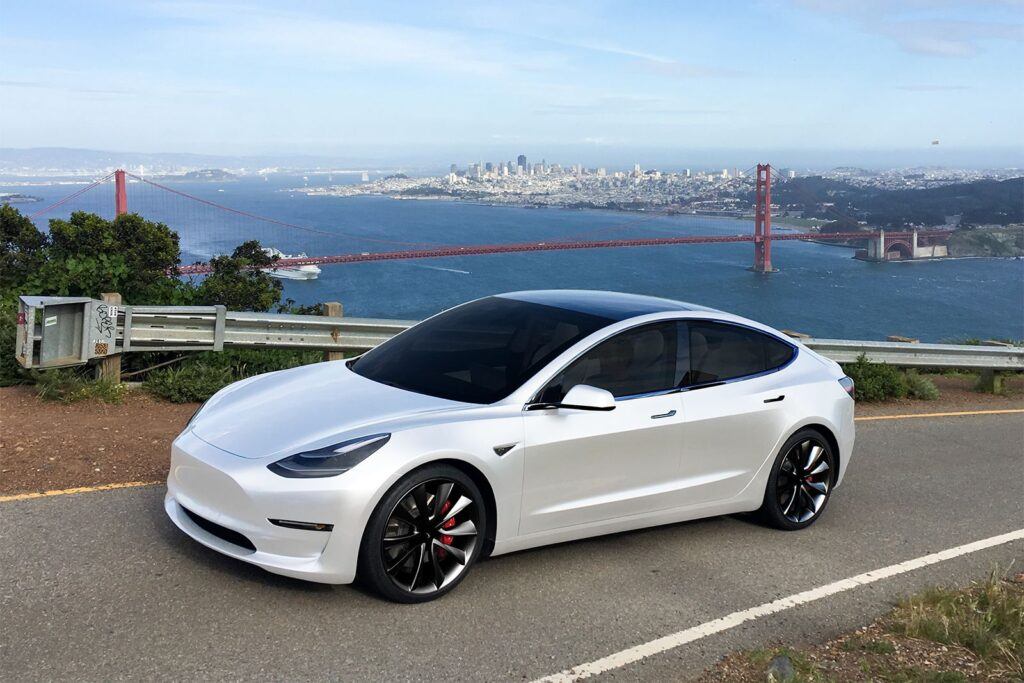Tesla: A Data driven future

A brief look at how tesla leveraged data to become one of the most valuable auto manufacturers in such a short time
In 2003 a small group of engineers got together in Silicon Valley to prove that adopting electric cars did not require a compromise on performance. They had various sources of funding but one notable one was Paypal co-founder Elon Musk. Musk invested $30 million and in 2004, started serving as the chairman of their company: Tesla.
Tesla released it first car, the Roadster, in 2008. This showed the world their new battery technology and powertrain. From there on tesla went on to introduce various vehicles like the Model S, Model X, Model 3, Semi and Cybertruck. But none of this was their greatest achievement. Electric vehicles existed before them, so did self-driving cars which they are now famous.
What tesla did differently was collect analytics data from all their cars on the roads. This data is then pushed to their servers for analysis. This was Tesla’s coup de grace. This enabled them to detect issues with their vehicles, often before the owners did and to also make their vehicles better by pushing over the air updates. The vehicles literally got better as time went on.

In October 2014, Tesla offered their users an optional “tech package”. This included sensors and cameras to assist drivers with avoiding accidents. They then analyzed the data coming off these sensors. The product of this was the self-driving update pushed to the cars in October 2015.
They had once earlier used an OTA update to fix the overheating issues in their cars due to power fluctuations. This ability to fix issues remotely is what made them unique.
The company also uses big data analytics to gauge customer satisfaction and to improve the customer experience. It actively analyses text in its online forums to find demand trends and common complaints that it can cater to in future updates.
Tesla claims that the sensor data collected from its cars let it design a map that is 10 times as accurate as those offered by its competitors. It also uses a lot of this data for training its autonomous driving system which is a huge value add both to its product and its brand.
The company’s machine learning algorithms are fed through sensors on both the inside and the outside of the cars. They identify different types of vehicles, driver alertness, pedestrians, traffic lights, etc. and make split second decisions in the form of adjusting the speed and heading of the vehicle. It is to be noted that tesla trains most of its models in the clod and the vehicles themselves only make decisions based on those models. This lets each vehicle effectively have the knowledge of the fleet.
Another asset that tesla holds is simply the sheer amount of data that collects. This data is immensely valuable as it can be used to track changes in traffic patterns, generate dynamic maps, and even track population flows over time.
This shows that even though Tesla’s main business is manufacturing and selling electric cars, their foresight to gather this data and their policy of using it to identify and address issues and customer demands is a huge value add to their offering. It can, in my opinion, be considered to be one of the greatest advantages Tesla has and one of the reasons that it is such a loved brand.
Another asset that feeds into this is the sheer size of their fleet. This adds immense value to their data based approach as their rapidly expanding fleet(especially after the release of the affordable Model 3) enables them to gather more and more data to feed their algorithm as training data and hence makes their models increasingly accurate with time. Any other competitor that steps into this space would be hard pressed to compete.

The connected nature of their cars does make them susceptible to cyber threats but except for a few instances, they have managed to keep the system secure. And like any valuable cyber asset manager, Tesla continues to play a constant game of cyber security escalation to stay ahead of threats to its system.
The future for Tesla looks bright and a large part of the reason for it is their data driven approach. This will keep them ahead of the pack as long as they continue to innovate as they have been doing in the past. It remains to be seen what else will be done in the name of the man cheated by The Wizard of Menlo Park.



Hi Vikram! Really great article. While it is clear that Tesla has been making good use of the data collected, I am quite concern about how the data is being collected. Specifically, I would imagine that data collected from all their cars could raise various privacy concerns. Digging deeper, I found this article from Reuters that discusses my concern. https://www.reuters.com/article/us-tesla-privacy-idCAKBN2BF2MM
Great post Vikram! It’s interesting how crucial OTA updates and data collection are for Tesla. I wonder how much do this OTA communications depend on having fast and robust connectivity available. This might be a potential limitation for expanding to other markets in the future.
Also, how do you think that 5G connectivity will change the industry?
Thanks for this insightful post, Vikram!
As already noted by Max, I’m also a bit concerned on the privacy of the data collected. I’m curious to hear your opinion on it!